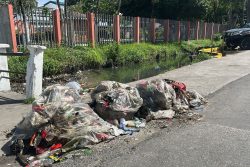Dear Editor,
I was pleased to see the article captioned ‘Buxton: Holding fast to its roots and boasting striking historical features’ by Alex Wayne, together with the accompanying photographs, in the Guyana Chronicle of July 26, 2014 (http://guyanachronicle. com/category/pepperpot/page/2/).
It reminds one of the glorious days of Buxton-Friendship as one of the premier villages in Guyana.
However, I am disappointed to note that the writer has copied verbatim several whole paragraphs from an article of mine titled ‘Buxton-Friendship’ (first published in the In the Diaspora column of Stabroek News, http://www.stabroeknews.com/2009/features/daily/11/16/in-the-diaspora-70/,
and since reproduced on various websites on the internet), incorrectly identifying the source of two paragraphs as a female villager of Buxton and neither placing the other paragraphs in
quotation marks nor acknowledging their source.
In my view, this form of plagiarism is unbecoming of a journalist of a national newspaper. I hope the editor of the Chronicle will enlighten this writer on the ethics of the profession and acknowledge the source of these paragraphs.
The paragraphs I refer to are as follows:
Indians, who started arriving in the village in the 1890s, emulated the Africans in striving for education and social betterment in the country. By the 1950s, they were scattered throughout the
village with concentrated enclaves in the area along the seashore, referred to as Buxton Front, where there were some of the most renowned sea fishermen in the country. On both sides of the railway embankment around the railway station they worked as pawnbrokers and jewellers, and operated clothing and hardware stores; and in the area along Brush Dam they raised cattle and grew rice in adjoining estate lands.
Most, if not all of them, adhered to Indian cultural traditions, and Buxton could boast of having some of the most educated and finest Indian musicians and singers of Chowtaals, Ramayan and Bhajans.
“I remember Saturdays and Mondays as prime market days at the municipal market next to the Post Office, just off Company Road, a stone’s throw from the railway station. The interaction and relationships between Africans and Indians were based on mutual respect and trust, befitting two peoples who depended on the fruits of each other’s labour.
“East Indians from the estate areas of Lusignan Pasture and Annandale Sand Reef to the west, and Vigilance to the east would bring their produce of garden vegetables (ochro, bora, calaloo, etc.) to sell to the African villagers who would sell them fruits, plantains and ground provisions (cassava, eddoes, sweet potatoes, etc.). Both groups would then patronise the fishermen and the butchers who operated their stalls in a corner of the market, where the odour was quite distinct. Before noon, the efficient Mr. Brown would have already completed his rounds and collected from vendors all market fees,” she recalled.
Buxton-Friendship’s loss of Indian fishermen and business people was the gain of Annandale and Lusignan. Almost overnight, in the midst of the turmoil and agony of 1964, a market developed in Annandale North’s Centre Street, rechristened “Market Street.” It quickly replaced Buxton’s municipal market as the commercial centre for the surrounding areas; and by 1965,
African Buxtonians were also patronizing the vendors in Annandale.
Likewise, many of the hardware and clothing stores relocated to Annandale; and the fishermen formerly of Buxton Front became the enterprising fishermen of Lusignan East, where the fishing industry was taken to new heights as the importation of salted cod and canned fish was banned during the period of economic hardship of the 1980s.
Yours faithfully,
Harry Hergash
Editor’s note
SN wrote the Editor of the GC, Mr Mark Ramotar, asking him for a comment. He did not respond, but published Mr Hergash’s letter (a copy of which he had received) in yesterday’s edition of the state newspaper along with an editor’s note. He apologized to Mr Hergash, and then went on to blame the internet for the dereliction. He cited a case involving “an editor of this newspaper [GC]” who did not acknowledge the source “of a thesis, part of which she used, [because] [it] was not quoted in Wikepedia. For that she received much flak from the media house that published the original article.”
Just for the record, the GC editor concerned did not use part of a “thesis”; she used three full-length features with photographs, maps, etc, published over three weeks by this newspaper. She also edited the pieces which had been written in house by SN. They were never published on Wikipedia for the simple reason that Wikipedia does not use articles of that length, although they might cite them, and therefore by extension the Chronicle editor concerned did not acknowledge Wikipedia either. The pieces had, however, appeared on a website carrying features of a historical nature, and while when SN checked, this newspaper had been accredited there, the editor claimed that when she downloaded the articles there was no such accreditation.









